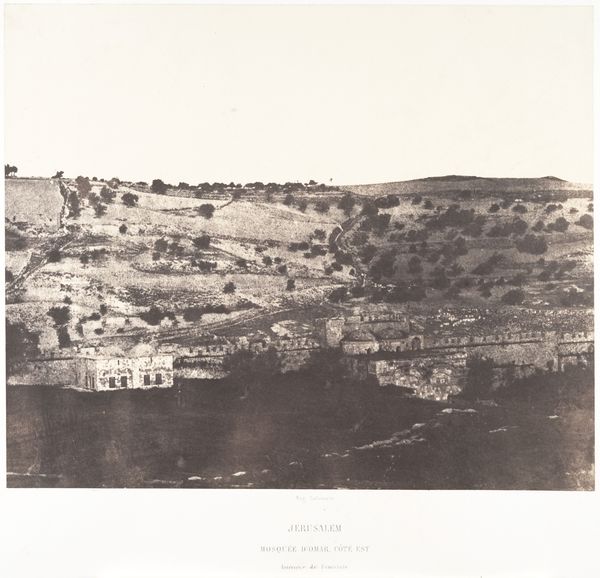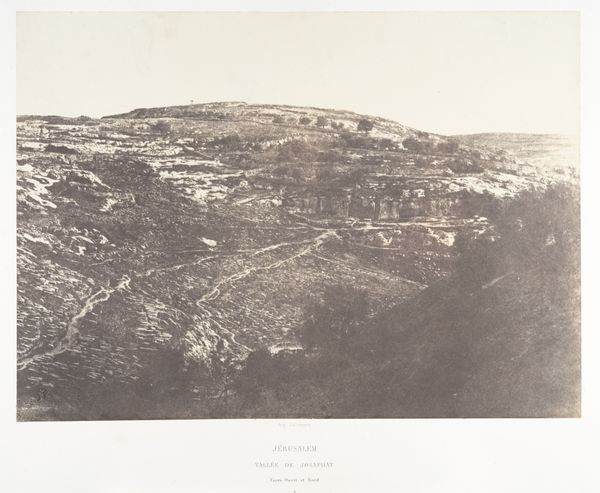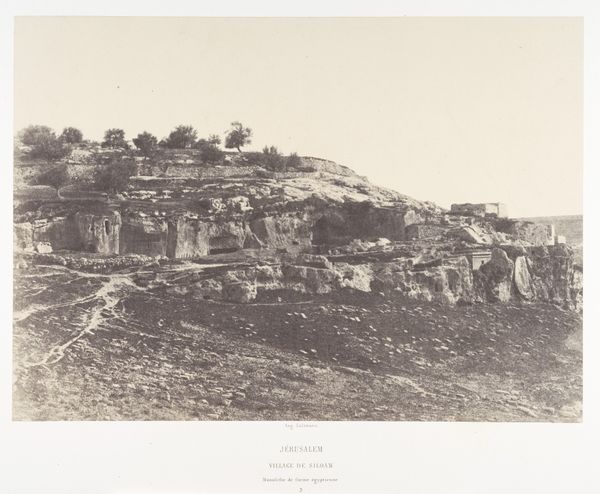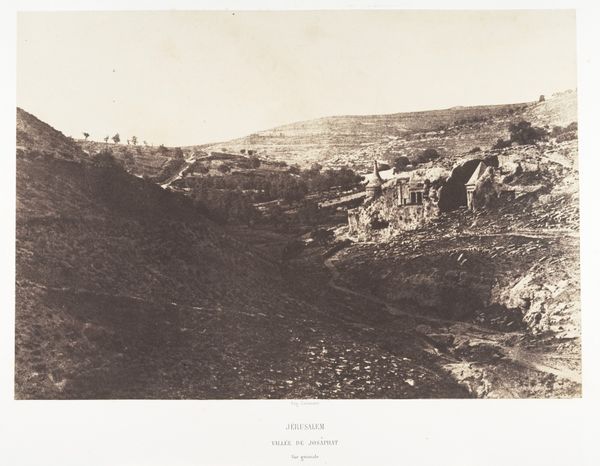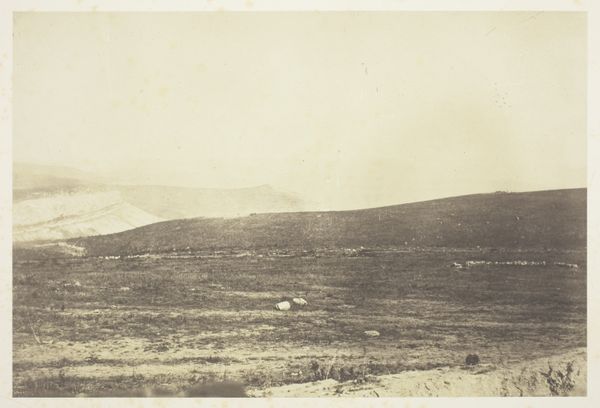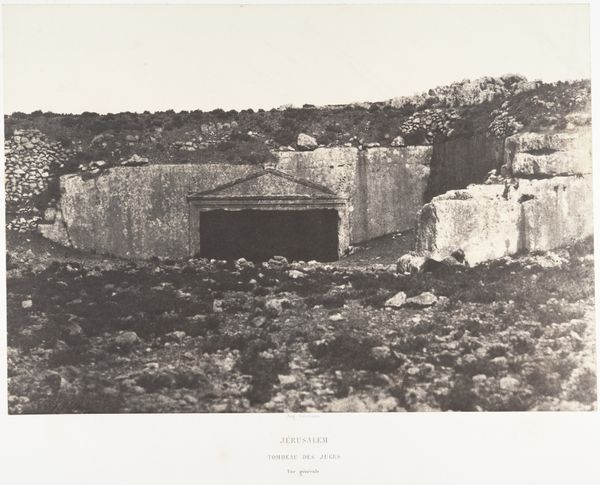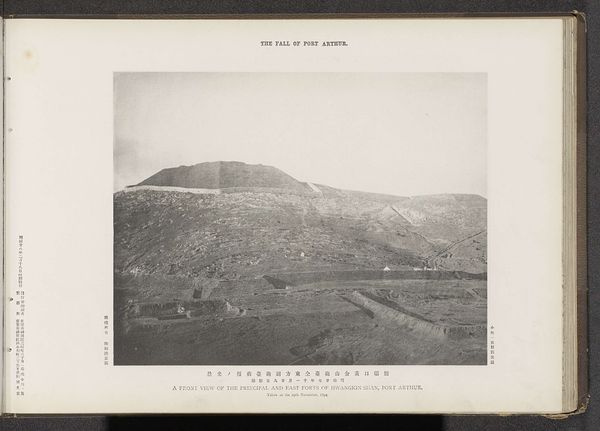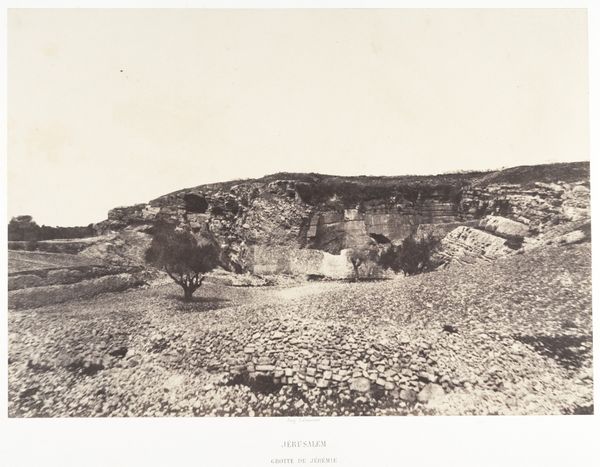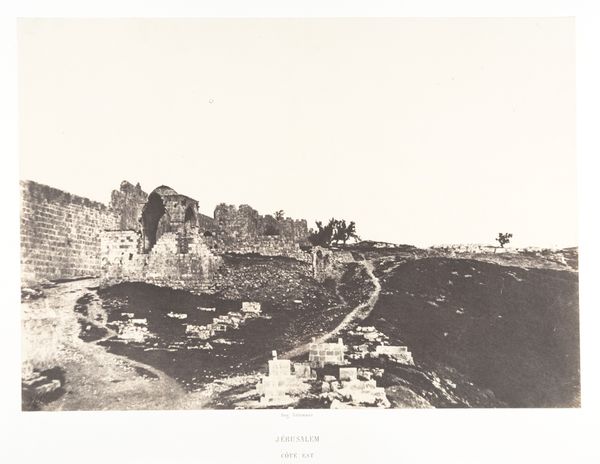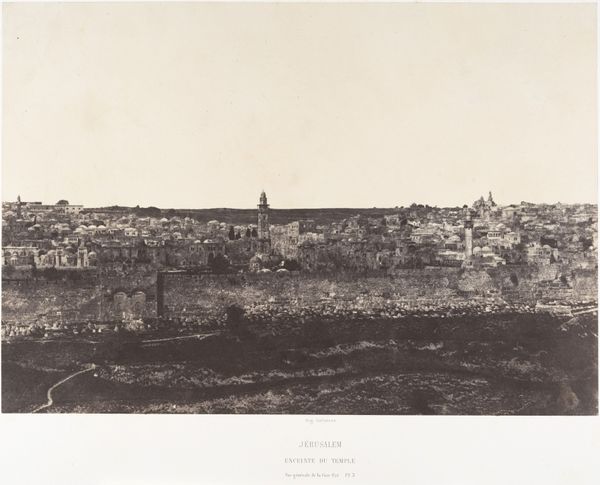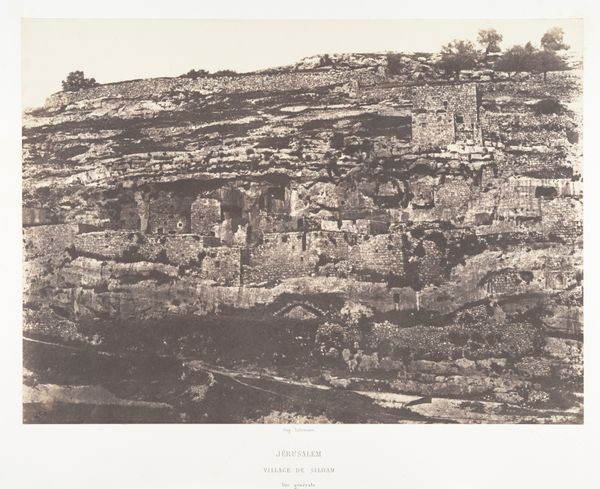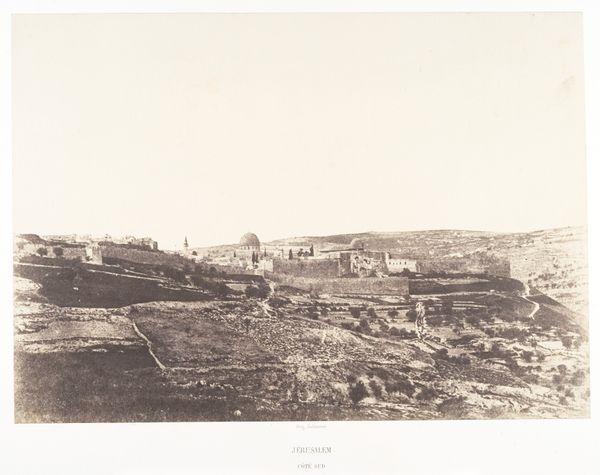
Jérusalem, Tombeau de Salomon, Vue générale 1854 - 1859
0:00
0:00
print, photography, site-specific, albumen-print, architecture
# print
#
landscape
#
photography
#
orientalism
#
site-specific
#
academic-art
#
albumen-print
#
architecture
#
realism
Dimensions: Image: 22.9 x 32.7 cm (9 x 12 7/8 in.) Mount: 44.7 x 60.1 cm (17 5/8 x 23 11/16 in.)
Copyright: Public Domain
Curator: Before us is an albumen print, a photograph titled "Jérusalem, Tombeau de Salomon, Vue générale," or "Jerusalem, Tomb of Solomon, General View," taken by Auguste Salzmann sometime between 1854 and 1859. It's an intriguing image of the landscape, currently housed at the Metropolitan Museum of Art. Editor: Oh, that's beautiful. It’s bleakly stunning! Such a raw, open view with those weighty rectangular structures nestled against the ochre hills... they seem ancient. There's something intensely peaceful and unsettling about it. Curator: Absolutely. Salzmann was part of a wave of photographers who journeyed to the Middle East in the mid-19th century, documenting the region with a scientific, almost archaeological, approach. The "Tomb of Solomon," what we see here, is now understood to be a series of water reservoirs. He was contributing to a broader interest in documenting and authenticating Biblical history through visual means, influencing what would be deemed as orientalist photography. Editor: Ah, so it’s part travelogue, part… historical evidence gathering. But even knowing that, it still feels dreamlike. Look at the quality of light, that pale almost melancholic sky… it isolates those reservoirs against the landscape, almost making them seem monumental, even mythical. Curator: Indeed, the albumen process, while meticulous, did lend a soft, almost ethereal quality. It romanticized the image a bit, didn’t it? Salzmann was celebrated for the sharpness and detail he was able to get but he also sought an artistic perspective. The photo blurs the boundaries of science and art of documentation and interpretation. It has certainly invited layers of colonial and religious meaning through this depiction. Editor: Right, because that very act of ‘documentation’ has its own biases. It's easy to forget now that these images shaped how many in the West imagined this landscape – through a carefully framed lens of orientalism, no pun intended! For the period of realism this is beautifully framed and well composed. Curator: Exactly, which speaks volumes about the choices inherent in supposedly objective imagery. Well, seeing this work reminds me to approach images with a critical eye, considering the perspectives that shaped them. Editor: Me too! It invites an awareness of how seeing can both enlighten and obscure! It also evokes so much emotion!
Comments
No comments
Be the first to comment and join the conversation on the ultimate creative platform.
